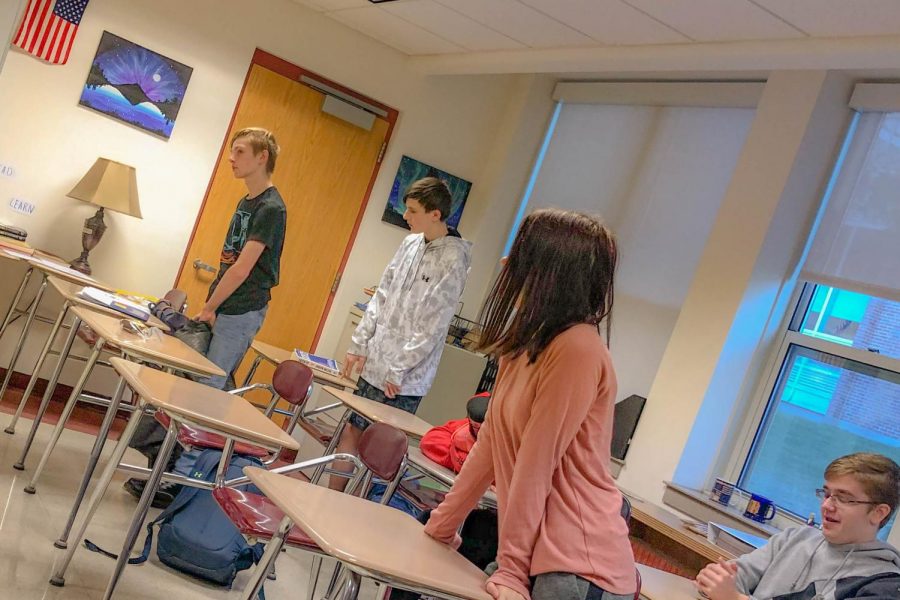Take a second to reflect in the moment of silence
As the announcements say to pause for the moment of silence, a variety of Algonquin students stand, and many decide to take the time to sit.
October 21, 2019
“One nation, under God, indivisible, with liberty and justice for all.” The speaker blares as I spot my unfinished homework on my desk. I figured I’d finish it as soon as we were done saying the pledge, but of course, like every single day of school, the speaker blared again: “Now, please stand for a moment of silence.”
I had never quite understood the reason why we had to stand in silence for less than five seconds every day. No matter what room, these five seconds seemed to mean nothing to me or to most people in the room with me. We stare ahead unaffected for a brief amount of time, and some of us even sit down, too tired to keep standing for a couple of extra seconds. So why do schools continue this tradition of a daily moment of silence?
In fact, I remember that on my first day of fifth grade, the teacher had told us that the moment of silence could be used as a moment to pray, to think about the day ahead, or to meditate. She was right. The main purpose of the moment of silence is to give students some time to let go before the rush of school begins. The brief period of time is supposed to advocate for a moment of reflection.
A brief history of the moment of silence shows that it hasn’t been without its controversies. During the 1980s, a couple of seconds started off as a strategy to advocate prayer. In 1985, however, it was found unconstitutional to observe a time in which teachers would encourage silent prayer. State endorsement of religion is not permissible under the First Amendment. The minute of silence is permitted for students to “meditate, pray, or engage in a silent activity (Education.FindLaw).” Once a teacher suggests it is used for prayer, the moment of silence will no longer be constitutional.
Although it may seem small to do much change, according to The Paul Robeson Elementary School in Brooklyn, N.Y, the moment of silence effected a positive change in their school community: “[Before enacting the moment of silence] overall student attendance was down, parent participation was low, and student achievement was climbing [downward] (Chabad).” After the school had started giving the students a minute to resign from their surroundings, they noticed these numbers rising. Our school environment may be considerably different than Robeson’s but this shows that the moment of silence can be beneficial. Additionally, the moment of silence can be used to unify the school community by recognizing a tragedy that had occurred.
At first, standing up for an extra couple of seconds seemed meaningless on a normal day. However, now I think the school community should value these seconds more; instead of thinking about the unfinished homework on your desk or wordlessly having a conversation with your friend, perhaps you can take these moments more seriously. It may be worth it to give yourself some positive words or think of any inner goals you might want to reach for the day ahead.We are surrounded by noise all the time that sometimes the noise bounces in our minds as well. As for the school, the moment of silence should be longer but no greater than a minute. This gives us ample time to reflect on ourselves and the day ahead.
A meaningful moment of silence is better than a meaningless string of words.











